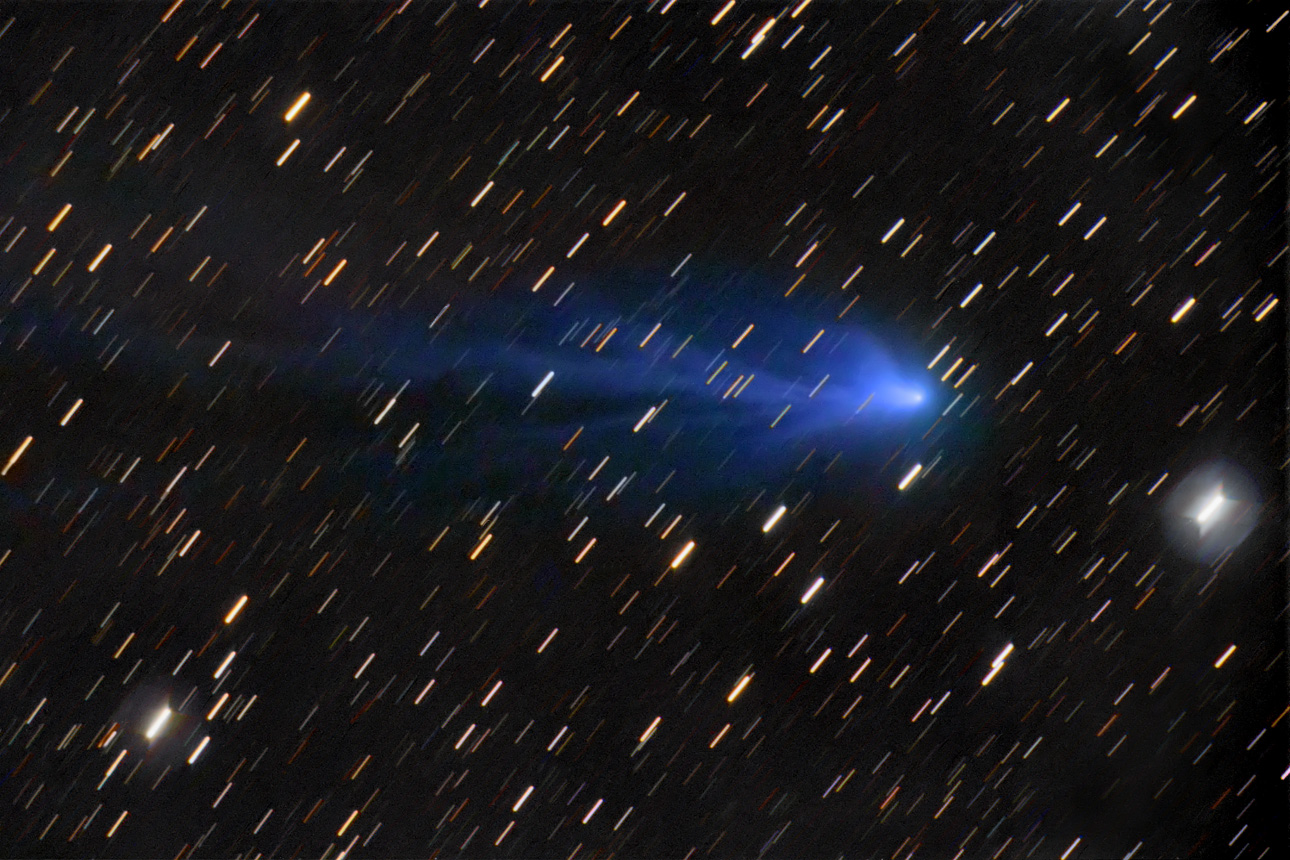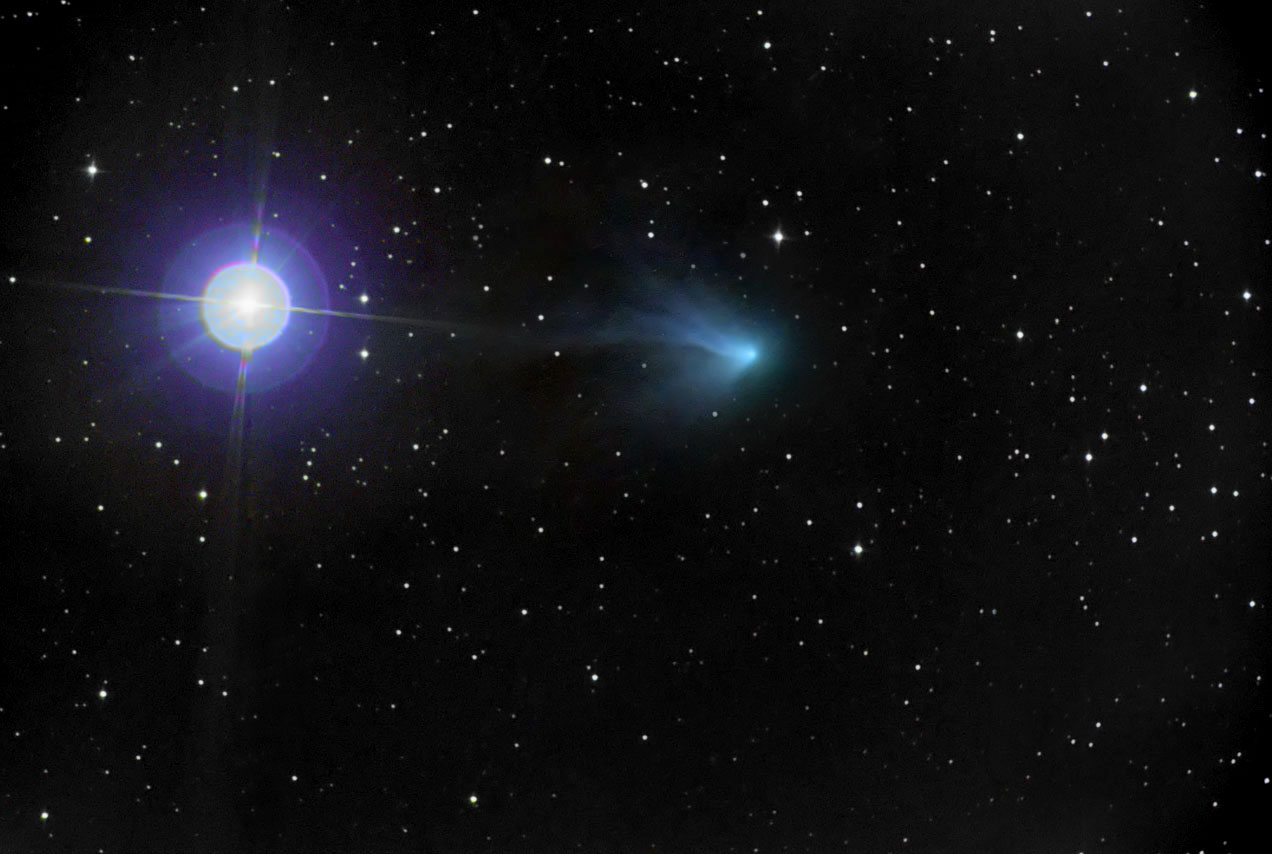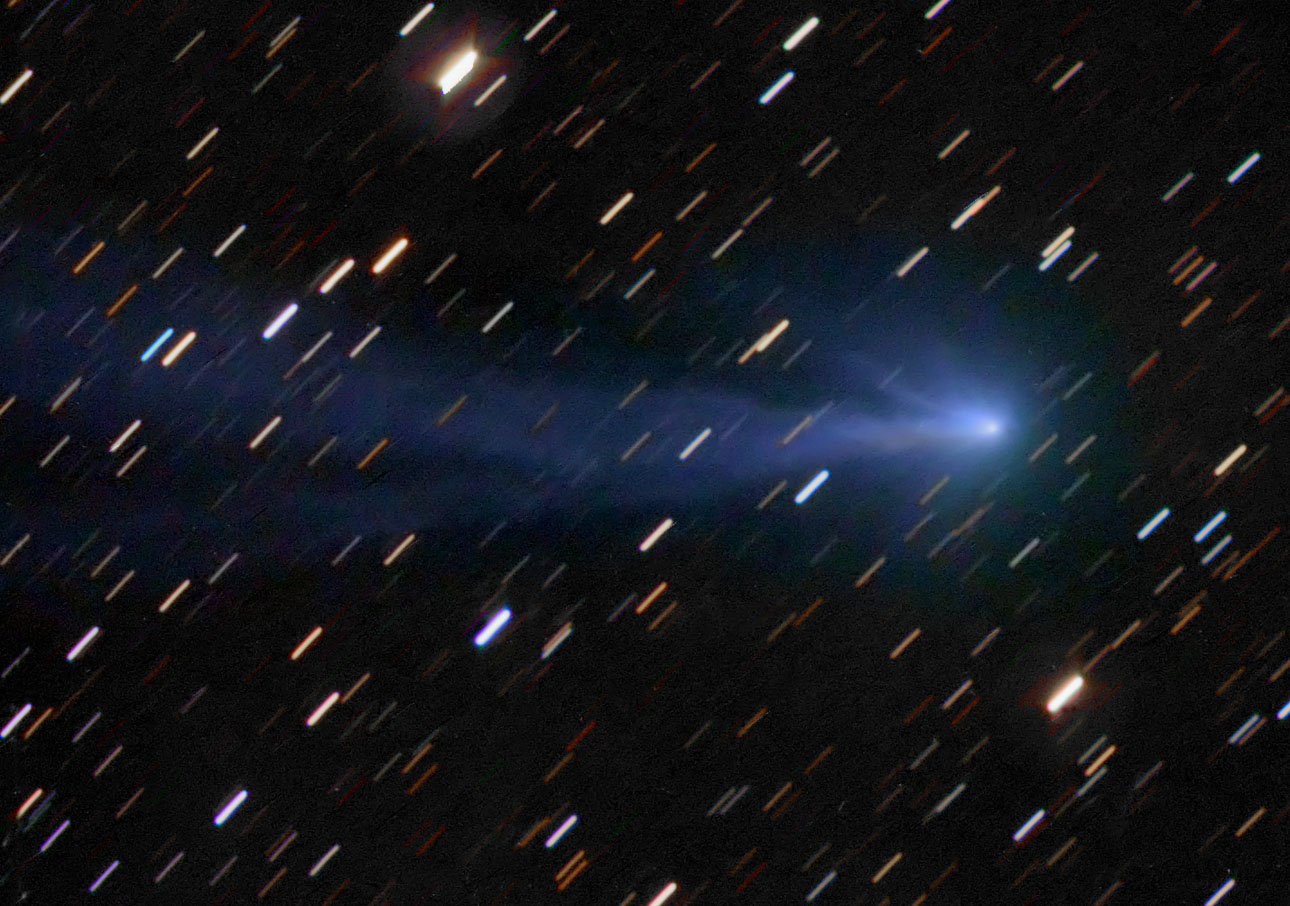Rare Carbon-Monoxide Comet Turns Blue in Stunning Deep-Space Photos

A rare carbon-monoxide comet turns deep blue as it whizzes through the inner solar system in a series of images by astrophotographer Chris Schur.
Named C/2016 R2 (PANSTARRS), or R2 for short, this comet is unusually rich with ionized carbon monoxide, which glows increasingly blue as it gets closer to the sun. "That is the gas carbon monoxide making its appearance," Schur told Space.com in an email.
Its tail of dust will also continue to grow as the comet encounters increasing levels of solar radiation along the way. "The constantly contorting tail is a superb photographic target," Schur said. Schur's photos of R2 reveal a fuzzy-looking comet that appears teal at first and gradually turns blue as the tail becomes more elongated. [Best Close Encounters of the Comet Kind]

Comet R2 was discovered in 2016 by astronomers using the Pan-STARRS telescope in Haleakalā, Hawaii. It was closest to Earth on Dec. 23, 2017, when it was a safe distance away: roughly 191 million miles (307 million kilometers).
The comet will make its closest approach to the sun on May 9, 2018. If it doesn't burn up and disintegrate as it swoops around the sun, the comet will then start making its way back toward the icy outer region of the solar system known as the Oort Cloud.

Assuming that the comet survives its trip around the sun this time, C/2016 R2 will swing by Earth and the sun again — but not for another 20,228 years, according to NASA's small-body database.
To capture these images of the comet, Schur used a 10-inch Orion astrograph reflector telescope with an ST-10XME self-guiding CCD camera.
Get the Space.com Newsletter
Breaking space news, the latest updates on rocket launches, skywatching events and more!
Email Hanneke Weitering at hweitering@space.com or follow her @hannekescience. Follow us @Spacedotcom, Facebook and Google+. Original article on Space.com.
Join our Space Forums to keep talking space on the latest missions, night sky and more! And if you have a news tip, correction or comment, let us know at: community@space.com.

Hanneke Weitering is a multimedia journalist in the Pacific Northwest reporting on the future of aviation at FutureFlight.aero and Aviation International News and was previously the Editor for Spaceflight and Astronomy news here at Space.com. As an editor with over 10 years of experience in science journalism she has previously written for Scholastic Classroom Magazines, MedPage Today and The Joint Institute for Computational Sciences at Oak Ridge National Laboratory. After studying physics at the University of Tennessee in her hometown of Knoxville, she earned her graduate degree in Science, Health and Environmental Reporting (SHERP) from New York University. Hanneke joined the Space.com team in 2016 as a staff writer and producer, covering topics including spaceflight and astronomy. She currently lives in Seattle, home of the Space Needle, with her cat and two snakes. In her spare time, Hanneke enjoys exploring the Rocky Mountains, basking in nature and looking for dark skies to gaze at the cosmos.









